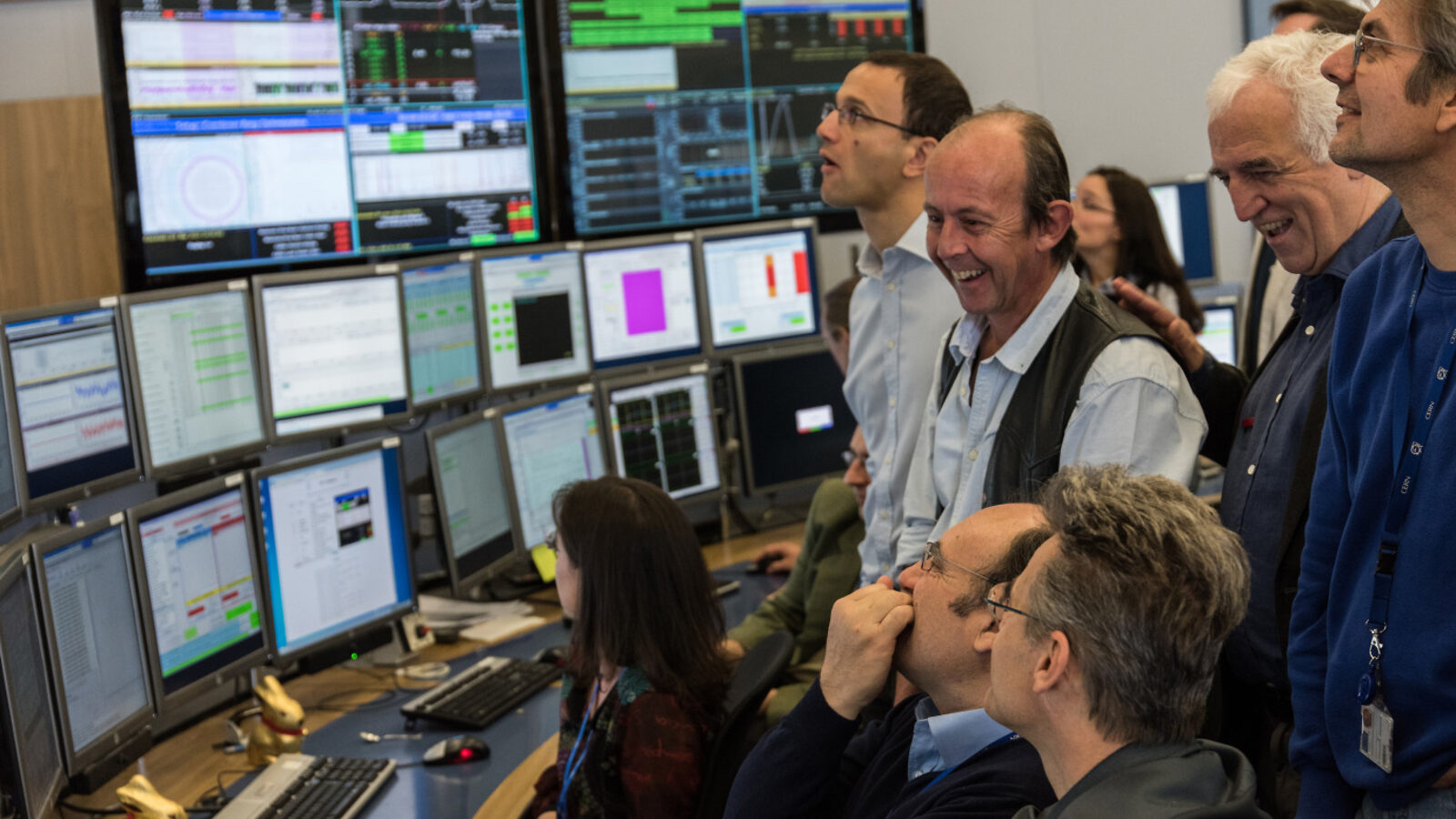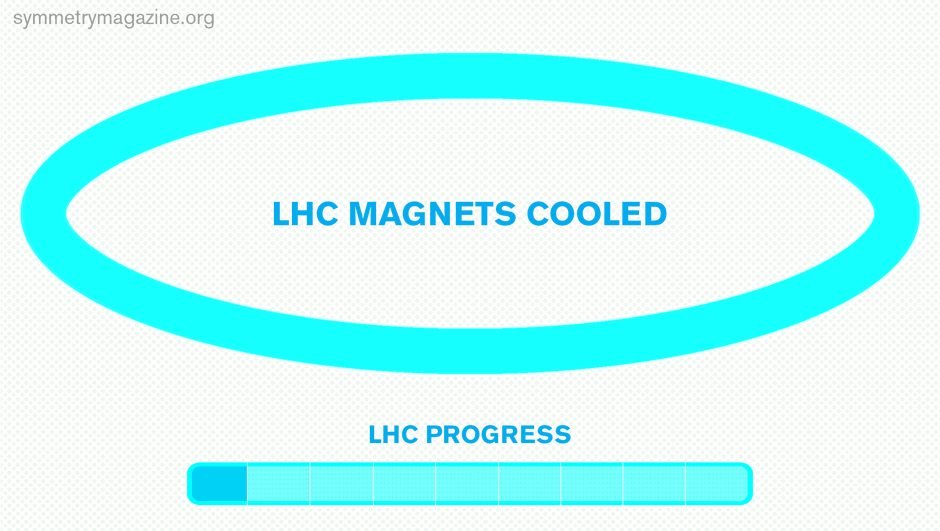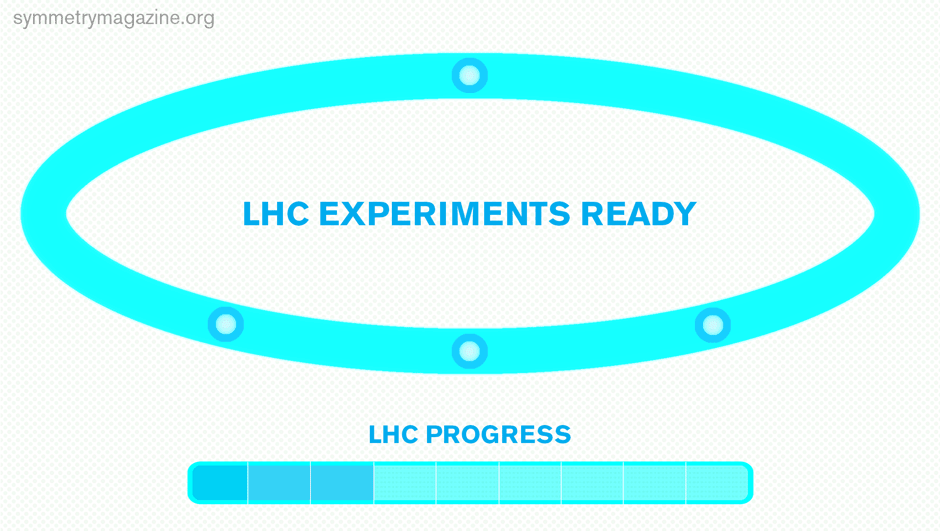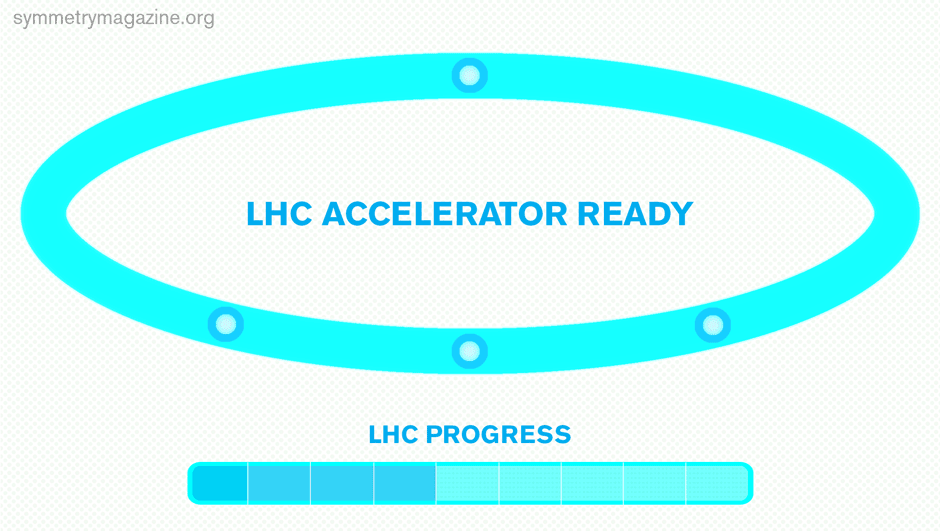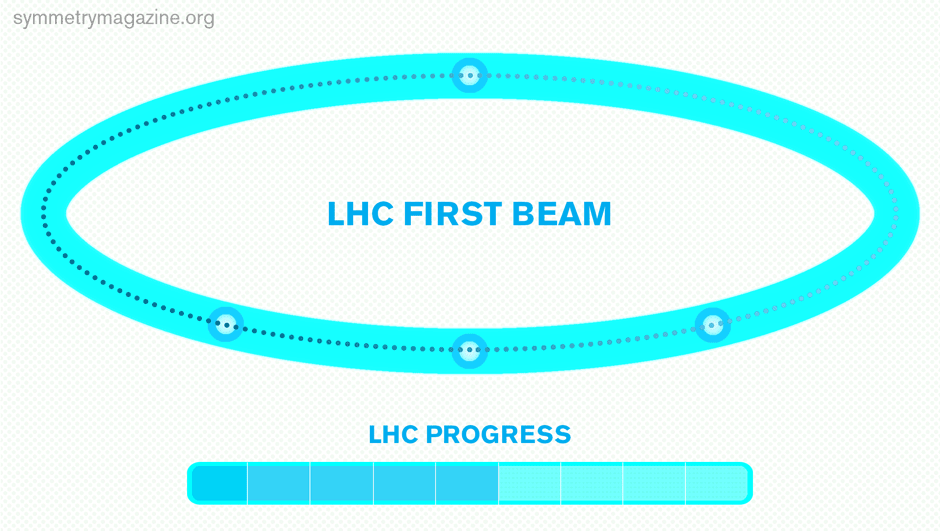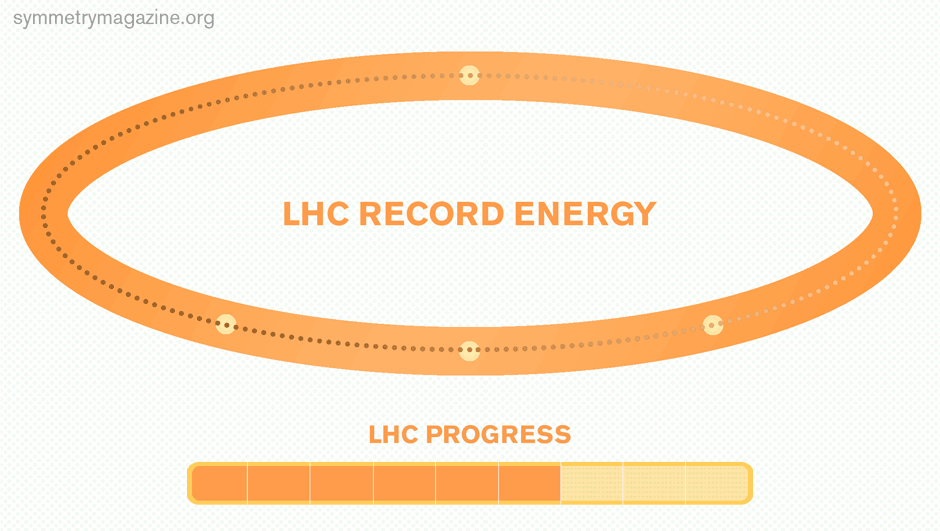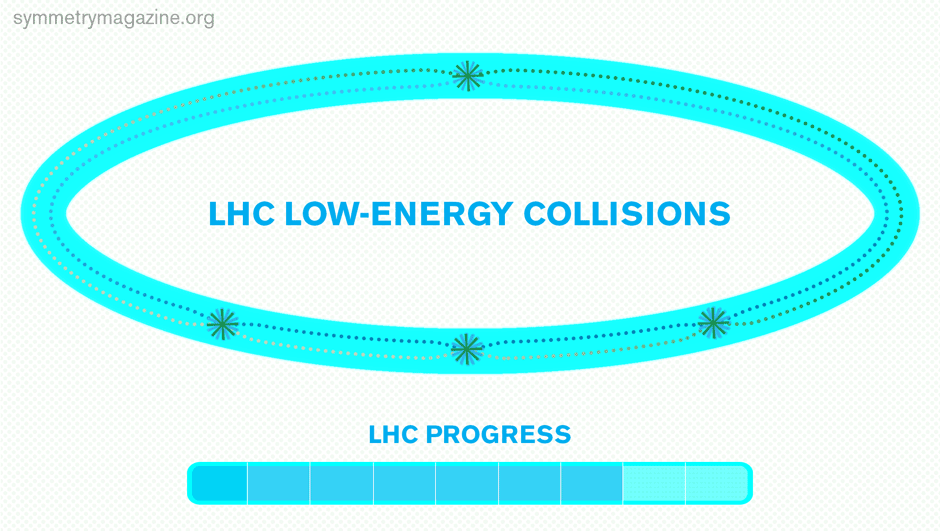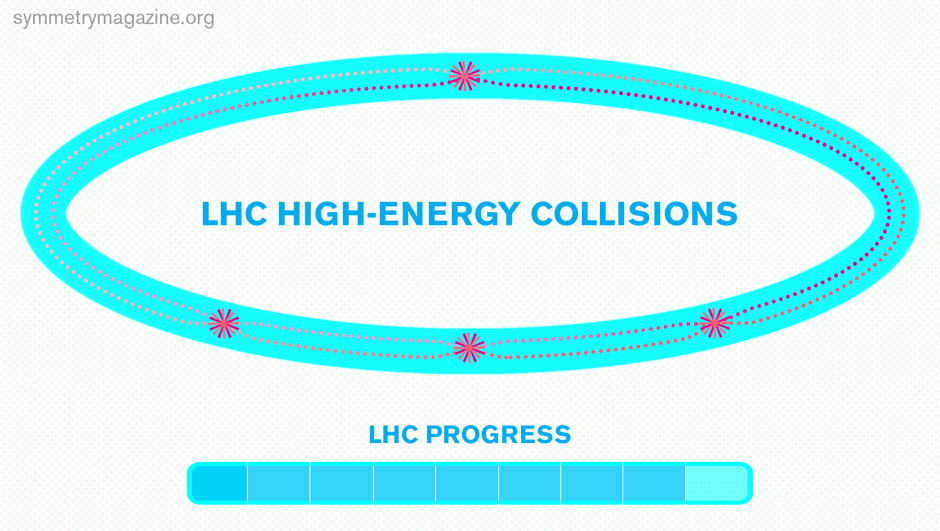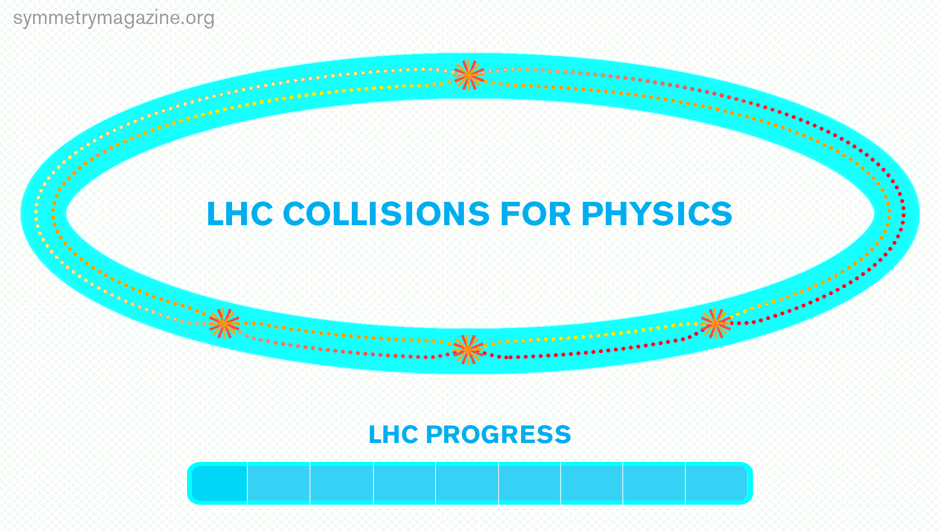Around midnight last night, engineers at CERN broke a world record when they accelerated a beam of particles to 6.5 trillion electronvolts—60 percent higher than the previous world record of 4 TeV.
On April 5 engineers sent beams of protons all the way around the improved Large Hadron Collider for the first time in more than two years (pictured above). On April 9, they ramped up the power of the LHC and maintained the 6.5 TeV beam for more than 30 minutes before dumping the high-energy protons into a thick graphite block.
“This is an important milestone, but it is really just a stepping stone to generating 13 TeV collisions, which is our real goal,” says Giulia Papotti, a lead engineer at the LHC. “If you want to find something new in particle physics, you have to search where no one’s searched before. That’s the point of going to higher energy.”
Now engineers are focused on preparing the machine to maintain two safe and stable beams—one in each direction—for several consecutive hours.
“During collisions we will run the beam continuously for six to 10 hours, until it is no longer efficient to collide the particles,” Papotti says. “Then we will dump the beam and start the process over again.”
Over the next few weeks, engineers will ensure that all the hardware and software systems work together and will finish defining the machine and beam parameters. Papotti says there might be a few surprises along the way to bringing the world’s largest machine back to life.
“There may be, for example, problems keeping the beam stable, and we also don’t know how many times the magnets will quench—or suddenly lose their superconducting state—while the beam is running,” Papotti says. “It’s experimental work. It’s partly about knowing what we have to do and partly about solving unexpected problems. But everything we do is to make the experiments happy and let them take data safely.”
With the energy record achieved and the first proton-proton collisions on the horizon, physicists are one step closer to exploring a new energy frontier.
“At this new higher energy, the collisions have the potential to create particles that have never been seen before in a laboratory,” says Greg Rakness, a Fermilab applications physicist and the run coordinator for the CMS experiment at the LHC. “The physicists at CMS are incredibly excited about this because discovering new physical phenomena is every physicist's dream. Discovering new physics is what we are here to do.”



